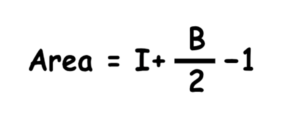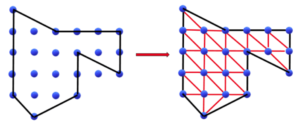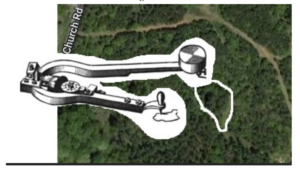Pick’s Theorem: From Points to Area
Written by: Arun Muthukkumar
Pick’s Theorem is a fascinating, elegant formula that relates the area of a simple polygon with lattice points to the number of lattice points on its boundary and in its interior. This simple yet profound result connects geometry and number theory, providing insights into how shapes can be understood on a grid. Many applications of this are found with lattice points, so let’s explore the basics of Pick’s Theorem, examine the proof behind it, and delve into its practical applications in mathematics and computer science. By the end, you will have a clear understanding of the theorem and its significance.
Understanding Pick’s Theorem and its Past
Pick’s theorem was formulated by Austrian mathematician Georg Alexander Pick in 1899, but it didn’t gain a wider level of recognition until Hugo Steinhaus popularized it in the 20th century, after Pick had died in a WW2 concentration camp.
Pick’s Theorem is used to calculate the area of polygons whose vertices lie on integer coordinates, or lattice points. The theorem states:

where I is the number of lattice points inside the polygon, and B is the number of lattice points on the boundary. In summary, this elegant formula converts a bunch of dots into the area. It somehow combines shapes and counting into one elegant formula!
Pick’s Theorem can be particularly useful when dealing with irregular shapes, as it simplifies the process of calculating areas that would otherwise require complex integration. In other words, you would need to use a branch of math called calculus to find the areas of these shapes, which is something we would rather not do.
An Outline of Proving Pick’s Theorem
To prove Pick’s Theorem, let’s break down our shape into its simplest form: triangles. Triangles are only 3 sides, which is bare minimum for a polygon. Any polygon can be cut into many triangles joined by the polygon’s vertices; as for why, that’s a different story. If a polygon has any lattice points on its boundary or area, it can be further triangulated, as shown in Figure 1. Therefore, the first step is to prove that any triangle with 3 boundary points and 0 interior points has an area of ½. This is a multistep proof involving other theorem’s as well, so I you should explore this proof elsewhere and treat this as an outline. After this is done, the proof can be extended to polynomials by adding more and more triangles with 3 boundary points and 0 interior points.
The key message from my outline above is that the number of lattice points inside and on the boundary provides enough information to determine the polygon’s area, without needing to rely on traditional geometry.
Figure 1
 Source: HubPages
Source: HubPages
Applications of Pick’s Theorem
Pick’s Theorem has practical applications in various fields, particularly in computer science and digital image processing. In computational geometry, it is used to quickly compute the area of irregular polygons on a grid, which is essential for algorithms that involve mapping pixelated images, designing game graphics, GIS, or analyzing digital terrain models. For instance, when processing images or performing object recognition in pixel grids, Pick’s Theorem allows for fast calculation of object areas without needing more complex methods.
Figure 2
 Source: John Bailey (Clemson University)
Source: John Bailey (Clemson University)
Note: Bailey had to find the area between trees using a planimeter, which was made easier using pick’s theorem.
Conclusion
Beyond its direct applications, Pick’s Theorem offers deeper insights into the relationship between geometry and arithmetic. It leads to explorations in lattice-point enumeration and connections between algebraic and geometric concepts. This theorem can also be generalized to three-dimensional shapes, opening doors to new research areas in discrete mathematics and solid geometry.
Pick’s Theorem powerful, bridging geometry and number theory. Its proof from triangles and lattice points makes it accessible and applicable. From IMSA’s math classes to advanced research, this theorem has far-reaching uses. Understanding Pick’s Theorem not only helps us calculate areas but also deepens our appreciation of the connections between different branches of mathematics. The next time you encounter a lattice polygon, remember how a few points reveal so much about its structure.
References and Sources
Source 1 “Art of Problem Solving” artofproblemsolving.com/wiki/index.php/Pick%27s_Theorem.
Source 2 “Denise Gaskin’s Let’s Play Math” https://denisegaskins.com/2017/03/23/dot-grid-doodling/
Source 3 Pick’s theorem to find the area of a polygon – hubpages. Available at: https://discover.hubpages.com/education/Pick-Picks-Theorem-To-Find-The-Area-of-a-Polygon..
Source 4 “Pick’s Theorem” www.geogebra.org/m/VGXB8zYy.
Source 5 “The Planimeter” whistleralley.com/planimeter/planimeter.htm.